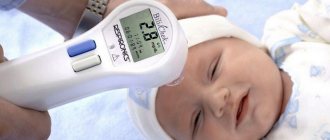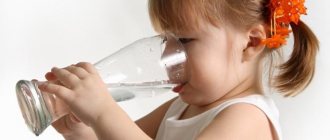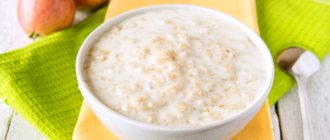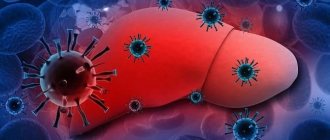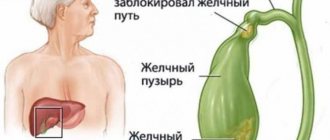Features of toxic infection in children
Food poisoning is the ingestion of harmful bacteria contained in spoiled foods of plant, animal and chemical origin.
The process of development of poisoning can be divided into three stages:
Latency is the period that passes from the moment harmful bacteria enter the body until they begin to penetrate the walls of the stomach and intestines, thereby causing the first symptoms of food poisoning. This stage is the most favorable to provide first aid and try to prevent the development of the disease.
Toxigenic - the stage when the symptoms of poisoning begin to manifest themselves in full. When they are first detected, it is immediately necessary to provide the necessary treatment, in the form of gastric lavage, cleansing enemas, medication, and a special diet. If the stage of poisoning has gone too far, then in this case it is necessary to contact a medical institution for help.
Recovery - after ridding the body of harmful substances, it needs time to recover from the shock it has experienced.
In order to avoid the appearance of symptoms and treatment of poisoning in a child, you must first know in what ways you can get sick:
- Eating food that has expired or is subject to improper storage. In them, especially in dairy products, harmful organisms begin to develop, which cause poisoning.
- Eating foods that have not undergone the necessary processing, for example, meat or fish.
- Eating mushrooms, plants or berries that are unsuitable for food.
- Accidental ingestion of any chemical substances into the body with food.
Symptoms of poisoning in a child appear within a few hours after consuming the forbidden product:
- First of all, restlessness begins in the digestive system, which after poisoning provokes frequent diarrhea or vomiting; there are cases of their simultaneous appearance. The stool may be mixed with mucus.
- Painful sensations are felt in the abdomen, especially in the stomach area.
- The general state of health worsens, body temperature rises, weakness, drowsiness, and loss of appetite appear.
- If vomiting and diarrhea occur frequently, dehydration may occur, which is expressed by sharper facial features and dry skin. In addition, convulsions may occur. You can read about what to do if a child is vomiting in the article: Vomiting in a child: reasons, how to stop, review of medications.
Depending on the type and degree of poisoning, the duration of the symptoms depends, which may pass in a couple of days, or may develop serious health complications, including death.
First aid
What to do if a child is poisoned at home, immediately after it is detected:
- First, you need to provide constant drinking in order to avoid dehydration in case of poisoning. This should be clean, boiled water at room temperature. Children over 5 years old can be given decoctions of chamomile, rose hips or tea.
- Next, you need to give sorbents, this can be activated carbon, which absorbs harmful substances and calmly removes them from the body. However, taking sorbents is prohibited if there is gastric bleeding or intestinal obstruction.
- It is also necessary to carefully monitor your diet during this period. On the first day, it is better to refrain from eating. The next day, you can start giving crackers, porridge with water, light broths, teas, medicinal decoctions or plain water. It is better to stick to this diet for several days, carefully returning to the previous one, excluding, accordingly, foods that can cause poisoning.
It should be remembered that during the treatment of poisoning, it is better not to resort to those medications and products that can harden the stool. It is better if all harmful substances leave the body naturally, because this is why the protective function in the form of diarrhea or nausea is activated.
To speed up the treatment process for food poisoning in children, you can take special medications.
Currently, many medications have been created aimed at getting rid of the symptoms of poisoning, as well as restoring the body, which are also suitable for children, for example:
- Regidron - suitable for getting rid of diarrhea and vomiting, it is available in the form of a powder, which must be diluted in warm, clean water and given to the child with this solution throughout the day.
- Smecta is also available in powder form, which must be drunk several times a day for 3–7 days, depending on the severity of the poisoning.
- Lactofiltrum - available in tablets, restores intestinal health.
The need to adjust the child’s nutrition
Special nutrition for a child when food poisoning occurs is simply necessary. The diet will help relieve the stress on the stomach, which is prone to infection.
Nutrition of a child during the period of poisoning
During an exacerbation, it is imperative to exclude any food. The most important “product” will be water. This will protect the body from dehydration. But here there is an exception regarding infants. They desperately need food. Therefore, after 4 hours after the manifestation of severe symptoms, the newborn is offered a mixture or applied to the breast.
A day after poisoning, if the patient’s health improves, a small older patient is offered a gentle diet:
- porridge with water;
- light soups with vegetables;
- crackers, drying;
- rice water
Diet after poisoning
The diet after food poisoning should be different from your usual diet for 2 weeks. The basic rules of a gentle diet are:
- refusal of fried foods, giving preference to steamed foods;
- exclude fatty foods, black bread;
- hold off on eating raw fruits and vegetables, as well as juices.
Children over 5 years old are recommended to drink prepared decoction of chamomile, rose hips, and weakly brewed green tea.
The use of enemas for food poisoning
Sometimes, it becomes necessary to rinse not only the stomach, but also the intestines in order to get rid of the toxins located there. To do this, you can resort to an enema.
The essence of an enema is that a special solution is injected into the intestines using a special device. This solution lingers in the body for a short time, and then, leaving it, washes away all the decay products inside. In order to give an enema to children, you need to seek the help of a person experienced in these matters, as damage can be caused.
To properly administer an enema, you need to follow a certain algorithm:
- A rubber bulb of suitable size (check with the pharmacy) must be boiled in clean water for half an hour for disinfection.
- Hands should be washed thoroughly; you can wear medical gloves.
- The child is placed in the correct position, if it is a newborn, then on his back, having first placed a diaper or diaper under him. If we are talking about an adult child, then he should lie on his side, pulling his legs to his chest.
- You need to fill the pear with warm, clean water or a prepared solution.
- The enema tip must be lubricated with special Vaseline.
- Having pulled the baby's legs towards the stomach, you need to carefully insert the tip into the anus 3-4 cm. First, you need to release the air from the bulb by pressing on it. As for adult children, the procedure is carried out in the same way, only they bent their legs on their own.
- The contents of the enema should be administered while the child inhales, slowly pressing it.
It is necessary for the child to be patient and then go to the toilet or potty. If we are talking about a baby, then you need to squeeze the buttocks so that the liquid does not come out immediately, since he does not yet know how to endure it on his own.
If the emptying went well, the procedure is repeated. After this, the child is washed and dressed in clean linen.
Traditional methods of treating food poisoning in children
When treating food poisoning in a child, you can use proven folk recipes:
- You can get rid of nausea in case of poisoning with ginger tea. To do this, you just need to pour boiling water over ginger, and then brew tea in this water.
- In addition, you can give your child decoctions of chamomile, dill, rose hips or wormwood.
- Honey is a good antibacterial agent; it can be given pure or diluted in water or tea.
- You can give children a decoction of oat flakes. To do this, you need to boil them in a large amount of water, then strain the resulting mixture. Rice water is prepared using the same principle.
- Ginger helps a lot. A teaspoon of a young plant is poured with boiling water and infused for up to 5 minutes. The resulting infusion should be drunk every hour, 1 teaspoon.
Treatment
Due to the risk of complications after dehydration in children, it is advisable to carry out treatment in a hospital. Based on the symptoms that accompany food poisoning in a child, treatment is prescribed, which can be adjusted after receiving the test results.
What can be prescribed for ordinary poisoning:
- Enterosorbents (activated carbon, smecta, enterosgel);
- Antibacterial drugs (Enterol, Nifuroxazide, Enterofuril);
- For severe dehydration, droppers with sodium chloride and glucose.
For botulism, anti-botulinum serum is injected into the body. And there are some nuances here: if time allows for testing and determining the type of disease, a drug is administered to combat the corresponding type (there are only 3 of them in the post-Soviet space). In complicated cases, the attending physician takes responsibility for administering three types of vaccines at once. At the same time, medical staff must be prepared to resuscitate the patient in case of an allergic reaction or anaphylactic shock.
If poisoning occurs due to poisonous plants, the healing process begins with removing toxins from the body with an appropriate antidote.
If there are any signs of poisoning, there is no need to self-medicate: give your baby antibiotics and painkillers, they not only will not improve the condition, but may even worsen it!
In addition to drug therapy, it is important to adhere to a strict diet for at least two weeks:
- light pureed soups and porridges;
- boiled or steamed meat or fish of low-fat varieties;
- Only yesterday's bread and biscuits are allowed from flour;
- continue drinking regime.
Floury, sweet, fatty, spicy and salty foods should be removed from the menu. Dairy products are also excluded.
In what cases should you consult a doctor?
Self-medication is not always a good idea; in some cases it is still better to seek help from a specialist:
- if poisoning occurs in a newborn, then you must call a doctor, since at this time he should always be under the supervision of an experienced medical professional. personnel;
- poisoning occurred due to the consumption of mushrooms, or poisonous berries, as well as chemicals;
- vomiting in case of poisoning continues for several hours;
- a certain amount of blood was found in the vomit or stool;
- the state of health after poisoning does not improve either the next day or the day after;
- Symptoms of poisoning such as nausea and diarrhea also do not go away for more than three days.
Symptoms of food poisoning in a child
Food poisoning is most often associated with poor personal hygiene. The infection is transmitted from dirty hands, unwashed fruits and vegetables, shared toys, and dishes.
The most common cause of poisoning in children is intestinal infections, such as dysentery, salmonellosis, escherichiosis and others. After bacteria enter the body, the release of toxins begins, intoxication develops, the symptoms of which are fever, headache, and weakness. The first symptoms of poisoning develop several hours (usually 4-6 hours) after ingestion of poor quality food. The main symptoms of food poisoning include:
Loose stools mixed with mucus and undigested food;
These symptoms are accompanied by an increase in temperature to 38° C or higher. The child becomes lethargic, weakness, headache, and loss of appetite appear. Losing large amounts of fluid through vomiting and diarrhea leads to dehydration, which is extremely dangerous in children.
A child with such symptoms should be seen by a doctor immediately. It is important to remember that fluid loss of about 10% of an infant's total weight before 1 year of age can be fatal.
The fluid lost by the child’s body must be replenished by giving plenty of fluids in the form of saline solutions (for example, Regidron), fruit juice, tea, and glucose solution.
In order to remove toxins from the child’s body, enterosorbents are used - drugs that absorb harmful substances that enter the intestines. These include Smecta, Enterosgel, Polyphepan, etc.
If the child is breastfed, it is necessary to temporarily stop feeding and give the child chilled boiled water. After the child’s condition normalizes, you can return to your normal feeding regimen.
If the child is bottle-fed, you need to pause for 8-12 hours, after which you feed the child with sour-milk formulas, you can add rice water. You can switch to other foods (vegetable and fruit purees, cereals, meat) on the third day after stool normalization.
In case of food poisoning in older children, it is also necessary to adhere to a gentle diet on the first day. Your child can be given rice porridge with water, kefir, crackers, mashed potatoes without milk, and vegetable soups. You need to eat in small portions and at certain intervals.
In case of chemical poisoning, symptoms depend on the effects of the toxins themselves and may include disorders of the nervous, respiratory and cardiovascular systems.
Poisoning from home-canned food can be especially dangerous, since botulinum bacteria can multiply in them, releasing dangerous botulinum toxin. This toxin has nerve paralytic properties. If medical care is delayed, the consequences can be fatal. Treatment of botulism is carried out in an infectious diseases hospital, where the child will be injected with anti-botulinum serum in the first hours after admission.
Treatment of victims of poisoning with poisonous mushrooms and plants is aimed at quickly removing the poison from the body before it has time to be absorbed into the blood. It is very important to provide first aid even before the doctor arrives. To do this, you need to rinse the stomach by giving the child up to 3 glasses of saline solution, and then press two fingers on the root of the tongue to induce vomiting.
Help with poisoning in a child
Parents often ask questions about what to do in case of intoxication, what first aid to provide to a child in case of poisoning.
First you need to call an ambulance, and before the doctors arrive, try to stabilize the patient’s condition on your own.
The following activities help with this:
- Reception of sorbents. Smecta and Enterosgel are considered safe and effective. They remove toxins from the intestinal tract, preventing poisons from entering the blood. The contents of the Smecta sachet are diluted in a glass of warm water. The solution is given to the child every 10 minutes, 50 ml. In case of vomiting, the single dose is reduced to 1 tbsp. l.
- Gastric lavage. The procedure is indicated for intoxication in children over 6 years of age. Dissolve 1 tsp in 1 liter of warm water. soda The liquid cooled to room temperature is given to the child. After this, vomiting is induced by pressing a finger on the root of the tongue. The method is effective when symptoms appear quickly when toxins are still in the stomach.
- Enema. Used to cleanse the intestines of residual toxic substances. The age-specific dose of enterosorbent (activated carbon or Smecta) is diluted with 100 ml of cool water. Using a rubber syringe, the solution is injected into the rectum.
READ Is it possible to breastfeed if poisoned?
Prevention of food poisoning in children
Prevention of food poisoning in a child consists of following basic rules of personal hygiene - washing hands before eating and after using the toilet. It is important to carefully process vegetables and fruits before eating. You should pay attention to the shelf life of products and immediately throw away spoiled ones.
In the warm season, it is better not to cook in advance, since after a few hours any dish contains a large number of bacteria and can become the culprit of the disease.
Children should not be allowed to pick mushrooms and berries on their own, but only do this under adult supervision. Children under 5 years of age should not be given food made from mushrooms – mince pies, pancakes, pizza, etc. The child’s body does not yet produce enough enzymes to digest such food.
Prevention
Prevention of poisoning in childhood should be carried out both in educational institutions and at home. Prevention from moms and dads is as follows:
- medicines, cosmetics and household chemicals should be stored in a place inaccessible to children;
- teach your child the rules of hygiene;
- watch your baby so that he doesn’t eat something suspicious;
- Do not pour medicines or medications into regular sachets;
- Talk to your children about the dangers of alcoholic beverages.
Canteens of kindergartens and schools must adhere to sanitary and hygienic standards and ensure that food is stored correctly. A teacher or teacher on walks with children should talk about what harmful mushrooms and poisonous plants there are.
The most effective prevention is attentiveness and responsibility!
Rate this article:
Signs of food poisoning
A mild form of the disease is characterized by weakness in the body, allergic rashes on the skin, increased swelling, rapid breathing and pulse. Signs of poisoning in a child, in addition to diarrhea and vomiting, are pain in the stomach, a high temperature that is difficult to bring down, abdominal pain, the process of dehydration begins, decreased blood pressure, and dry mouth. The most dangerous symptom is vomiting and diarrhea without stopping, this is a signal that the body is severely dehydrated. To prevent a complex condition, you need to urgently call an ambulance.
Household intoxication (through water, food) is a disruption of the gastrointestinal tract. If a child vomits due to poisoning, but does not have diarrhea, this indicates damage to the wall of the upper gastrointestinal tract. If chemical compounds enter the stomach that destroy epithelial cells, the receptors are stimulated reflexively and the urge to vomit appears. Poisoning can be acute or chronic. The acute period is characterized by the rapid development of the disease. The chronic form activates new symptoms gradually as toxicity increases (occurs with drug or alcohol intoxication).
The temperature is dangerous when:
- vomiting does not stop, but only intensifies;
- diarrhea more than 10 times a day;
- streaks of blood appear in loose stools;
- convulsions and other signs of damage to the nervous system are observed;
- it does not go astray for several hours with any drugs or does not go astray for long;
- dehydration occurs.




